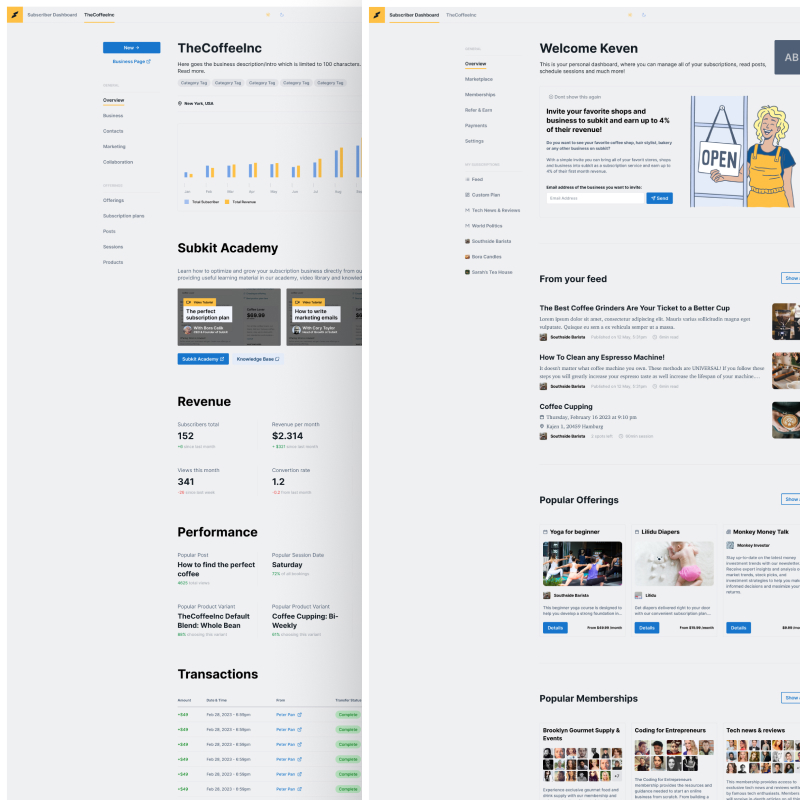
Subkit
Revitalizing and Innovating a Complex E-commerce Platform
Subkit is a comprehensive e-commerce and self-marketing platform that enables creators and businesses to sell subscription-based physical products, digital products, services, and events. As the successor to the previous design team, I led the transformation from v1 to v2, resolving critical design issues while introducing innovative features like the Collaboration Tool for automated revenue sharing between creators.
Project Overview
Subkit is a comprehensive e-commerce and self-marketing tool that enables creators and businesses to sell subscription-based physical products, digital products, services, and events. With an extensive range of selling and marketing options, Subkit bridges the gap between platforms like Etsy, Substack, and Amazon. A standout feature is the Collaboration Tool, which allows users to create joint subscription packages with automated revenue sharing.
- Hired as the successor to the previous design team, responsible for resolving inherited design issues, enabling development, and delivering new features.
- Overhauled the public-facing sites, redesigned the admin panels, and introduced a complete new design system to unify and scale the platform.
- Led the design for Subkit across all platforms: Windows, macOS, Android, iOS and SmartTV.
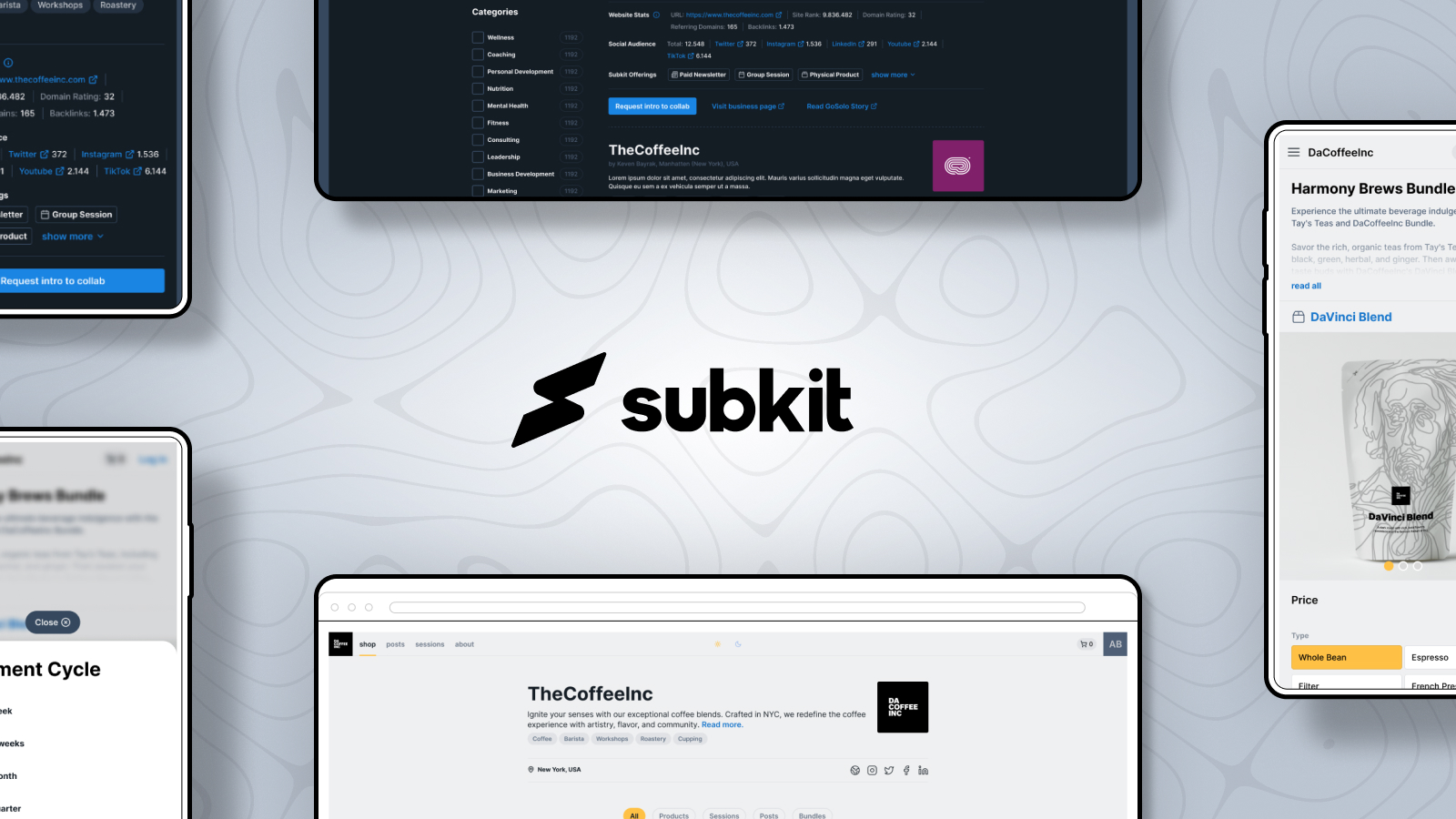
Goals & Challenges
As the successor to the previous design team at Subkit, I inherited a complex e-commerce platform with critical design issues that needed immediate attention. The primary challenge was to resolve these issues while simultaneously developing new features and maintaining the platform's extensive functionality. Our goal was to create an intuitive interface that could handle everything from subscription management to automated revenue sharing, making it accessible to creators and businesses of all sizes.
The journey involved multiple challenges: redesigning core workflows without disrupting existing users, establishing a scalable design system to unify the platform, and creating innovative features like the Collaboration Tool. Through systematic improvements and close collaboration with development teams, we successfully transformed Subkit into a comprehensive platform that simplified complex e-commerce operations while enabling new possibilities for creator collaborations.
Key goals
- Resolve critical design issues inherited during the v1 to v2 transition, unblocking development and enabling feature delivery.
- Establish a scalable, cohesive design system to standardize the platform and improve efficiency.
- Enhance the usability of admin panels and public sites to better serve users managing subscriptions, marketing, and e-commerce tasks.
- Develop innovative features like the Collaboration Tool to set Subkit apart in the marketplace.
Challenges
- Tackling complex design workflows while maintaining ease of use for diverse users.
- Redesigning the platform's core interface without disrupting existing user workflows.
- Ensuring seamless integration of new features, such as revenue-sharing and collaboration, into an already complex system.
- Balancing the need for a user-friendly interface with the requirements of a B2B platform.
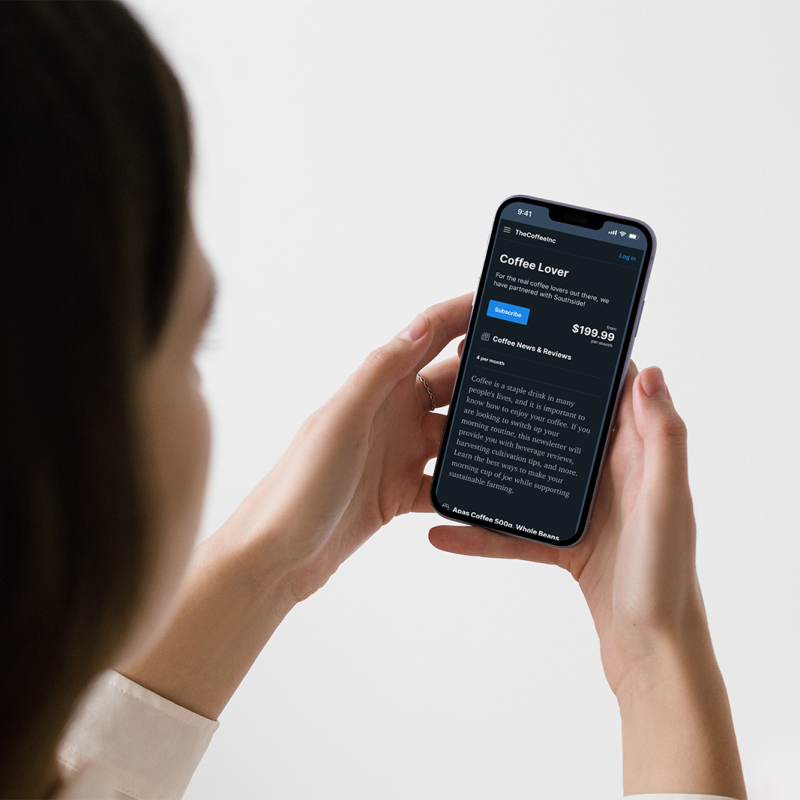
Process
Our approach to revitalizing Subkit began with a comprehensive design audit to identify critical issues and opportunities. This systematic evaluation allowed us to prioritize improvements while maintaining the platform's core functionality. The foundation of our transformation was the development of a new design system - a crucial step in unifying the platform's diverse features and enabling faster, more consistent development.
The process evolved through several key phases: overhauling public-facing sites, redesigning admin panels, and creating innovative features like the Collaboration Tool. Each phase required careful balance between improving user experience and maintaining platform stability. Through close collaboration with development teams and stakeholders, we successfully modernized Subkit's interface while introducing powerful new capabilities for creators and businesses.
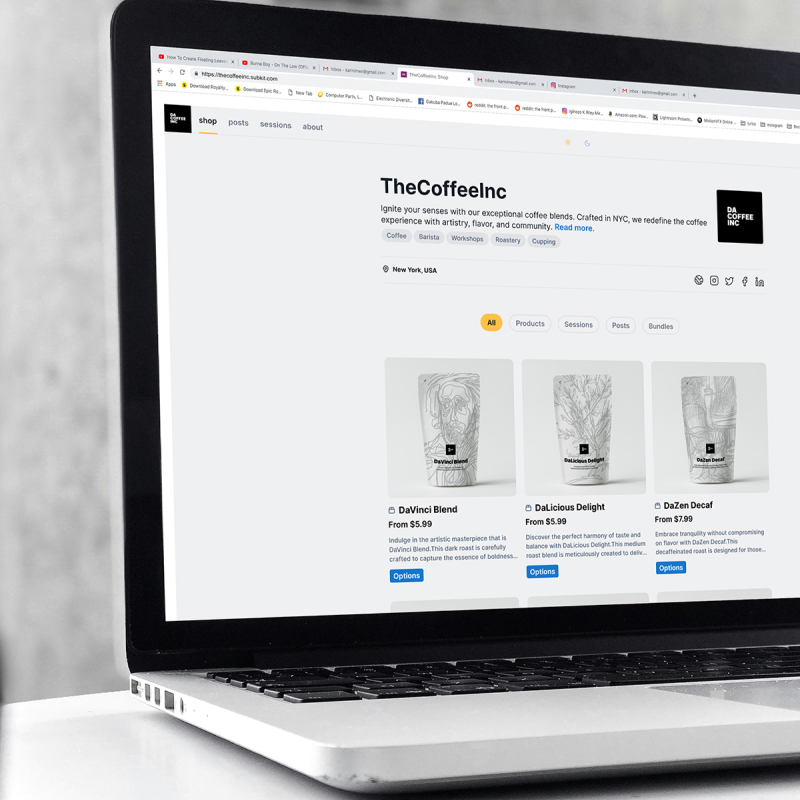
1. Design Audit and Issue Resolution:
- Conducted a detailed audit of the existing design system, public sites, and admin panels.
- Identified and prioritized key usability and scalability issues, working closely with development to unblock progress.
2. Establishing a New Design System:
- Built a scalable, cohesive design system from scratch to unify the platform's diverse features.
- Developed modular components and templates for faster iteration and consistent branding.
- Ensured the design system was adaptable for both the public sites and admin panels.
3. Redesigning the Public Sites and Admin Panels:
- Overhauled the public-facing sites, focusing on creating a seamless user experience for potential customers.
- Redesigned the admin panels to streamline complex workflows, such as subscription management and audience analytics.
- Improved responsiveness and accessibility across all interfaces to accommodate a broad user base.
4. Developing the Collaboration Tool:
- Designed a groundbreaking feature that allows users to create joint subscription packages.
- Addressed complex technical challenges, including revenue share automation, shared shipping logistics, and subscription configurations.
- Simplified the user interface to make this advanced feature intuitive and easy to use.
5. Cross-Team Collaboration:
- Worked closely with product managers and developers to align priorities and ensure the feasibility of designs.
- Partnered with stakeholders to define a strategic vision for Subkit's growth.
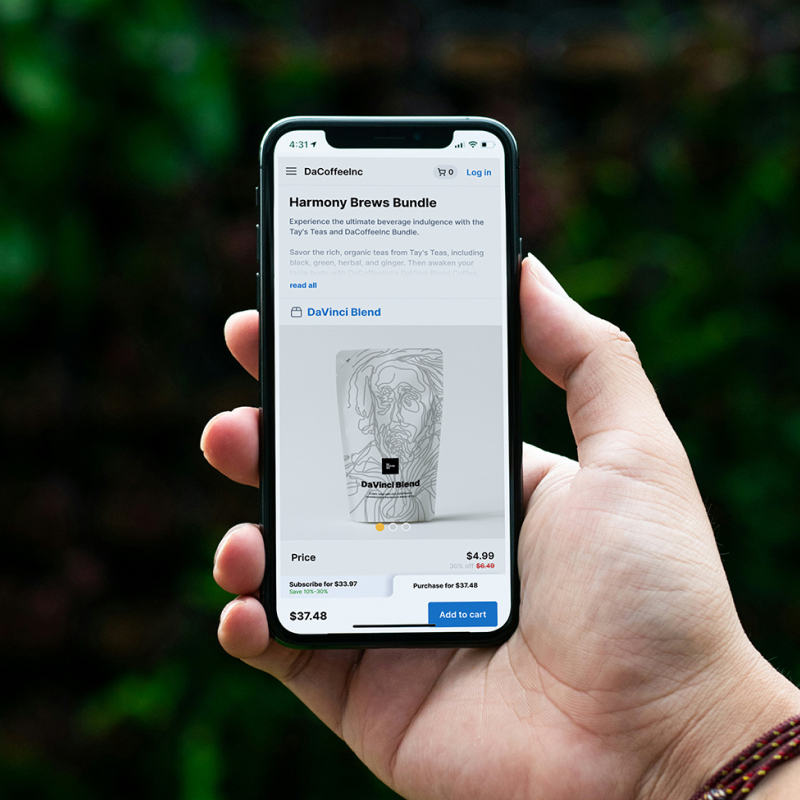
Outcomes
The transformation of Subkit delivered tangible results across multiple fronts. Our design overhaul not only resolved critical roadblocks in the v1 to v2 transition but also established a new standard for e-commerce platform usability. The introduction of the Collaboration Tool proved particularly impactful, differentiating Subkit in the market by enabling seamless partnerships and automated workflows for creators and businesses.
The new design system's scalability positioned Subkit as a versatile alternative to established platforms like Etsy, Substack, and Amazon. By simplifying complex operations while maintaining powerful functionality, we helped Subkit evolve from a basic e-commerce tool into a comprehensive platform for modern creators and businesses. The positive feedback from both stakeholders and users validated our approach to balancing sophistication with accessibility.
User Impact
- Resolved major design roadblocks, enabling the transition from Subkit v1 to v2.
- Delivered a vastly improved user experience, simplifying the management of subscriptions and marketing tools.
- The redesigned admin panels and public sites significantly enhanced usability and visual appeal.
- The innovative Collaboration Tool became a key differentiator, allowing users to partner seamlessly and automate complex workflows.
Business Growth
- The new design system provided a scalable foundation for Subkit's continuous growth and future feature expansion.
- Improved the platform's competitiveness, positioning it as a versatile alternative to giants like Etsy, Substack, and Amazon.
Recognition
- Stakeholders commended the revitalized design system and platform overhaul for driving efficiency and unifying the brand.
- Users praised the intuitive interface and ease of use, even for advanced features.
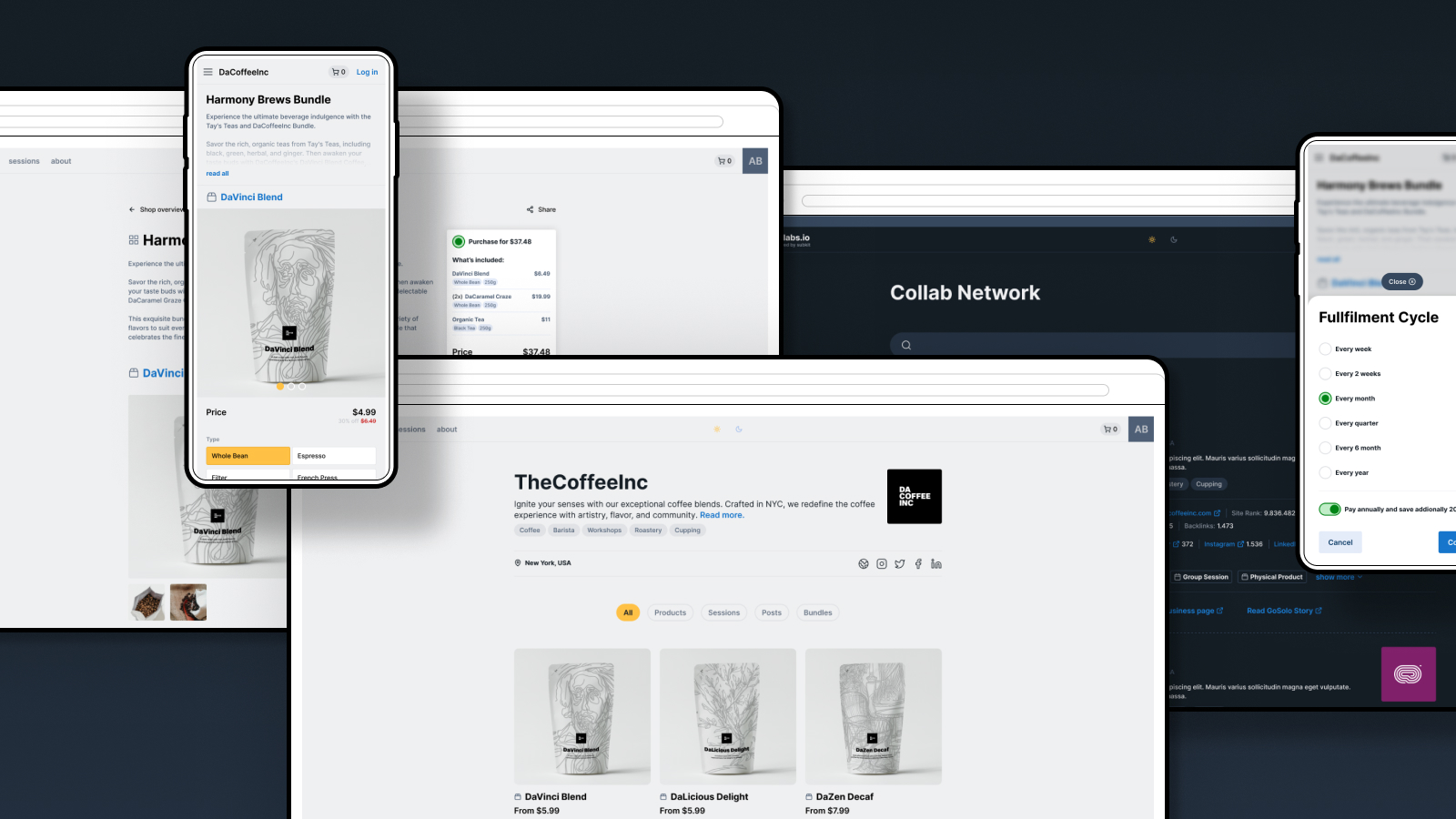
Reflection
Taking on Subkit's design transformation taught me invaluable lessons about managing complex platform transitions. The challenge of balancing immediate fixes with long-term scalability pushed me to think more strategically about design systems and their role in product evolution. What started as a redesign project became a masterclass in leading transformative change while keeping the platform operational and users satisfied.
Perhaps most rewarding was seeing how our solutions, particularly the Collaboration Tool, redefined what was possible in the e-commerce space. This project strengthened my ability to tackle complex design challenges in fast-paced environments and reinforced the importance of building scalable systems that can grow with the business. The experience of leading cross-functional teams through such a significant transformation has profoundly shaped my approach to design leadership.
Learnings:
- Transitioning a platform during a redesign requires balancing legacy user needs with future scalability.
- A cohesive design system is critical to scaling complex platforms and ensuring efficiency across teams.
Proud Moments:
- Successfully resolving long-standing design issues while implementing a complete design overhaul of the public sites and admin panels.
- Delivering a groundbreaking feature like the Collaboration Tool, which redefined how users could collaborate and share revenues.
Growth:
- This project honed my ability to tackle complex design challenges in fast-paced environments.
- Strengthened my expertise in creating scalable systems and leading cross-functional teams through transformative changes.
